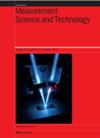FP-Deeplab: A Segmentation Model for Fabric Defect Detection
IF 2.7
3区 工程技术
Q1 ENGINEERING, MULTIDISCIPLINARY
引用次数: 0
Abstract
In the pursuit of fabric production efficiency and quality, the application of deep learning for defect detection has become prevalent. Nevertheless, fabric defect detection faces challenges such as low recognition ratio, suboptimal classification performance, detection inefficiency, and high model complexity. To address these issues, an end-to-end semantic segmentation network is proposed employing an efficient encoder-decoder structure, denoted as Feature Pyramid-Deeplab (FP-Deeplab). The improvements involves enhancing the backbone network by improving the mobilenetv3 network for superior performance, a novel Atrous Spatial Pyramid Pooling with Dilated Strip Pooling (ASPP-DSP) module which combines strip pooling, dilated convolution and ASPP, to ensure an expanded receptive field and the capability to gather distant contextual information. Additionally, a Feature Pyramid module (FP module) is proposed to integrate multiscale features at various stages more efficiently. The incorporating of depth-wise separable convolution in FP-Deeplab enables significant parameter and computational cost reduction, catering to online detection requirements. Experimental results showcase the superiority of FP-Deeplab over classical and recent segmentation models. Comparative analysis demonstrates higher segmentation accuracy and reduced parameter quantity. Specifically, compared to the benchmark Deeplabv3+ model with MobileV2 as the backbone, FP-Deeplab achieves a notable increase in segmentation accuracy (F1 score and MIoU) by 4.26% and 5.81%, respectively. Moreover, the model parameters (params) are only one-fifth of the original model, indicating the efficiency and effectiveness of our proposed approach.FP-Deeplab:织物缺陷检测的分割模型
为了追求织物生产的效率和质量,深度学习在疵点检测中的应用已变得十分普遍。然而,织物疵点检测面临着识别率低、分类性能不理想、检测效率低和模型复杂度高等挑战。为解决这些问题,我们提出了一种端到端语义分割网络,采用高效的编码器-解码器结构,即特征金字塔-Deeplab(FP-Deeplab)。改进措施包括:通过改进 mobilenetv3 网络来增强骨干网络,以获得更优越的性能;新颖的 Atrous 空间金字塔汇集与稀释带状汇集(ASPP-DSP)模块,该模块结合了带状汇集、稀释卷积和 ASPP,以确保扩大感受野和收集远处上下文信息的能力。此外,还提出了一个特征金字塔模块(FP 模块),以更有效地整合各个阶段的多尺度特征。在 FP-Deeplab 中加入深度可分离卷积可显著降低参数和计算成本,满足在线检测的要求。实验结果表明,FP-Deeplab 优于经典和最新的分割模型。对比分析表明,FP-Deeplab 的分割精度更高,参数数量更少。具体来说,与以 MobileV2 为骨干的基准 Deeplabv3+ 模型相比,FP-Deeplab 的分割准确率(F1 分数和 MIoU)分别显著提高了 4.26% 和 5.81%。此外,模型参数(params)仅为原始模型的五分之一,这表明了我们提出的方法的效率和有效性。
本文章由计算机程序翻译,如有差异,请以英文原文为准。
求助全文
约1分钟内获得全文
求助全文
来源期刊

Measurement Science and Technology
工程技术-工程:综合
CiteScore
4.30
自引率
16.70%
发文量
656
审稿时长
4.9 months
期刊介绍:
Measurement Science and Technology publishes articles on new measurement techniques and associated instrumentation. Papers that describe experiments must represent an advance in measurement science or measurement technique rather than the application of established experimental technique. Bearing in mind the multidisciplinary nature of the journal, authors must provide an introduction to their work that makes clear the novelty, significance, broader relevance of their work in a measurement context and relevance to the readership of Measurement Science and Technology. All submitted articles should contain consideration of the uncertainty, precision and/or accuracy of the measurements presented.
Subject coverage includes the theory, practice and application of measurement in physics, chemistry, engineering and the environmental and life sciences from inception to commercial exploitation. Publications in the journal should emphasize the novelty of reported methods, characterize them and demonstrate their performance using examples or applications.
 求助内容:
求助内容: 应助结果提醒方式:
应助结果提醒方式:


